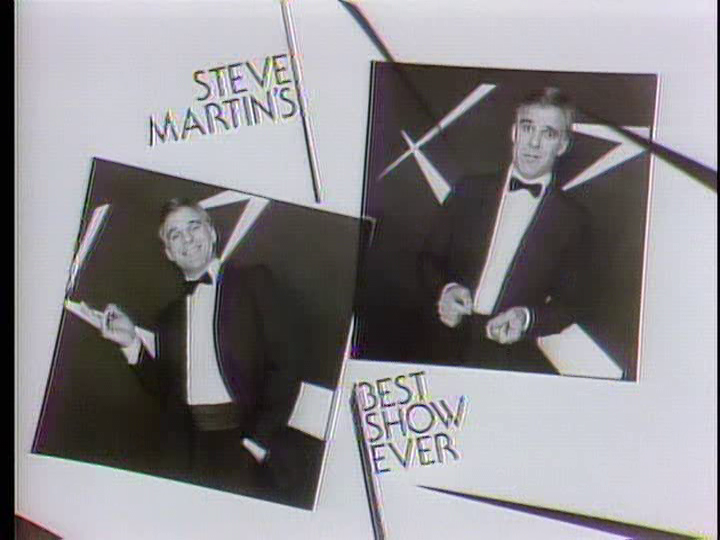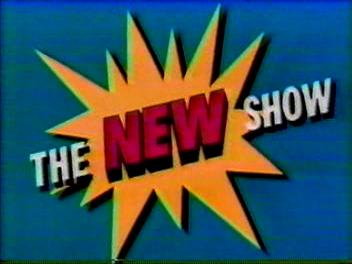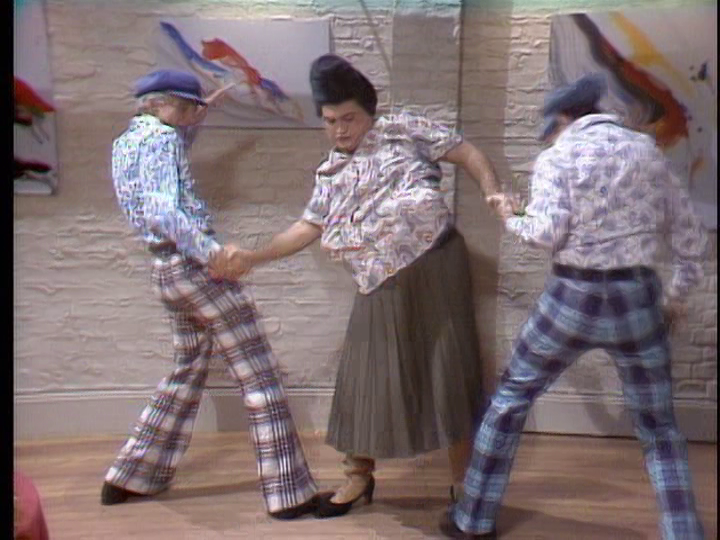Lorne's Missing Links: Steve Martin's Best Show Ever and The New Show
Lorne Michaels stepped away from Saturday Night Live after the show’s fifth season, and his creation was kept alive by other producers, writers and actors for the next five years; when he returned to the show in 1985, he had a whole new cast, but many of the behind-the-scenes personnel were those who had been associated with his original five year tenure, and there were a handful of additions that would shape the show’s tone and look for years to come. Because the Jean Doumanian and Dick Ebersol eras each had their own specific directions and mostly unique personnel. one wonders what the show would have been like if Michaels had stuck around during that time. There are a few hints of what a Michaels-helmed SNL would have looked like in two of his TV productions during that period: Steve Martin’s Best Show Ever, a special Martin did for NBC in November 1981, and The New Show, Michaels’ ill-fated return to weekly network television.
The Steve Martin special, unsurprisingly, is the more successful of the two. Broadcast live from Studio 8H on November 25, 1981 during a three-week break for SNL (halfway between the sixth and seventh shows of Dick Ebersol’s first season as producer), Best Show Ever was essentially a mini-SNL reunion: former regulars Dan Aykroyd, John Belushi, Laraine Newman and Bill Murray appear, as does SNL band member and featured player Paul Shaffer; early regular host Eric Idle also shows in a pre-taped segment, while Gregory Hines (a musical guest on the show in 1979), Lauren Hutton (who hosted the Ebersol incarnation of the show a few weeks before), Lynn Redgrave and the American String Quartet make guest appearances. Apart from Martin and Idle, the writers, crew and production staff were pretty much all SNL alumni: besides, Michaels and Aykroyd, the writing credits include Al Franken, Tom Davis, Jim Downey, Alan Zweibel, Tom Gammill, Max Pross and Sarah Paley.
A lot of why Best Show Ever works is the whole one-off aspect of the production; apparently this special was written and cast at the last minute, and aired with minimal promotion. Despite the title of the special there were no built-up expectations around it, so the whole thing comes off as a pleasant lark. A few familiar SNL characters turn up: Martin and Aykroyd reprise their swinging Festrunk Brothers for a sketch (die-hard SNL fans take note: short-lived featured player Emily Prager has a few lines in that sketch) and Aykroyd’s sleazy Irwin Mainway hosts a game show. The length of some of the sketches (particularly “The Elephant Guy”) makes this reminiscent of a 1979-80 SNL, but with Aykroyd and Belushi still around and without the sense of burnout that plagued that season.
A little more than two years later, Michaels returned to NBC with a 13-episode commitment for a new sketch comedy show to premiere mid-season. This time, there was more advance press, and Michaels spelled out his ambitions for The New Show in a New York Times article that ran the Sunday before the show’s January 6 premiere: the show was intended to be live-to-tape, recorded Thursday nights in the CBS studio on West 57th Street, and was to bring the same SNL sensibility (with some more “adult” humor) to prime time.
Michaels also sought to distinguish the show from his earlier creation, particularly by blurring the line between guest performer and regular cast. The New Show had a core cast of three writer-performers (Second City alum Valri Bromfield, frequent SNL host Buck Henry, former SCTV regular Dave Thomas) that were billed along that particular week’s guests, mostly rotating between combinations of former SNL regulars and friends of the show, Thomas’s former SCTV colleagues Catherine O’Hara and John Candy. and several other well-known actors. A number of unknowns also appeared, including Maggie Jakobsen (later Maggie Wheeler, probably best known as Chandler’s nasal ex-girlfriend Janice on Friends), Maura Moynihan (daughter of Senator Daniel Patrick Moynihan), and Dan Vitale (briefly a featured player during SNL’s 1985-86 season)
A lot of The New Show behind-the-scenes personnel linked SNL’s past and future: most of the returning SNL writers who did Best Show Ever were also on The New Show’s payroll, with Jim Downey assuming head writer duties, plus new writers John Murray (brother of Bill and Brian), Jack Handey and George Meyer. Michaels also brought in some former SNL production staff (Liz Welch, Howard Shore, Cherie Fortis, Cheryl Hardwick, Edie Baskin), poached a few current employees from Dick Ebersol (Karen Roston, Heino Ripp, Akira Yoshimura), and brought in a few others who would end up joining Michaels on SNL a year and a half later (G.E. Smith, Keith Raywood).
Despite high expectations and this strong pedigree, The New Show tanked in the ratings, and affiliates began complaining about the poor lead-in to their nightly newscast (something that would happen again during NBC’s experiment with giving Jay Leno a prime-time show weeknights at 10pm). Self-deprecating references to the sluggish start began to crop up over the next few shows. There were also budget issues and considerable production problems from the show being done in the CBS studio; after the third show, Michaels got permission from Dick Ebersol to move production to Studio 8H, recording on Tuesdays. Tom Davis told Dennis Perrin that the audience response often had to be sweetened in post-production, a trick Michaels would use for repeats of the 1985-86 season. In comparison, Dick Ebersol’s SNL had turned a corner, and even as the show faced the eventual departure of Eddie Murphy, the cast and writers were turning out some of their best work in years.
The critical reaction was also underwhelming. A People Weekly pan of the show called it an “hour of overlong skits that go nowhere and stay there”, while Tom Shales, despite seeing promise in the show, acknowledged the premiere “was awkward and uncertain and…looked real crummy”. Indeed, the earlier shows suffer from a few sketches that overstay their welcome, particularly a thin sketch involving drugged out stupors in the first show and a mostly laugh-free Dallas/Dynasty spoof about a cheese-baron family (“The Muensters”). The New Show wasn’t as beholden to recurring sketches as Saturday Night Live is notorious for being, but the two sketches that get multiple installments (“Den/Restaurant of Revulsion” and “The Frightened Family”) almost seem like parodies of bad one-joke SNL sketches.
The show’s struggle to define itself was also apparent: it’s like Michaels and company are asking “If we’re not Saturday Night Live, what are we?” The use of rotating guests and a smaller core cast may have been to limit comparisons to the other show, but it stood in the way of the performers developing a strong group dynamic. Indeed, there’s a sense that Michaels really wanted to be doing SNL again. There are musical guests every week. Weekend Tonight, a weekly staple hosted by Henry and Thomas (and co-written with Zweibel) that parodies fluff entertainment news shows like Entertainment Tonight, feels like it’s supposed to be this show’s equivalent of Weekend Update, but a little more rigidly formulaic: usually featuring an interview segment, a top five list, and a scene using redubbed film or video footage, featuring New Show announcer Jeff Bergman.
There were still some good sketches, and the most frequent recurring guests (John Candy and Catherine O’Hara) always seemed to add a spark to whatever scenes they participated in. One can also detect the seeds of the more conceptual direction Saturday Night Live would take after Michaels returned in 1985, as many of the New Show writers joined him. Several New Show guests would also eventually appear on SNL; one (Randy Quaid) was a regular for 1985-86, while another (David Johansen) would make frequent appearances in the guise of his Buster Poindexter persona (which made an early appearance on The New Show) the following season.
Michaels was counting on the show finding its stride as it went on, but prime time has less patience for shows that need time to come together: after nine episodes, The New Show was cancelled following the March 23 telecast with Teri Garr and The Pretenders. A best-of compilation aired some time afterward (subtitled “with Extra Added Comedy”). A few months after the cancellation, Tom Shales of the Washington Post wrote an excellent post-mortem with perspectives from Michaels, NBC boss Brandon Tartikoff, and others on the show’s failure.
Lorne Michaels has all but buried The New Show; perhaps the embarrassment of its high-profile failure or the significant financial loss he incurred tainted the show for him. The show never made it to cable reruns (the short run didn’t help) or an official digital release, even though fuzzy and incomplete home recordings circulate and many sketches can be found on YouTube. Even episode guides are missing a handful of sketches here and there.
Michaels would occasionally have difficult years on SNL afterward, particularly the seasons where he tried to add high profile cast members like Anthony Michael Hall or Janeane Garafolo, or when the cast lacked a particularly strong dynamic. Being back on home turf would allow Michaels to fix these problems, but each time it happened, it felt like he forgot the big lesson of The New Show: sometimes talent isn’t enough.































